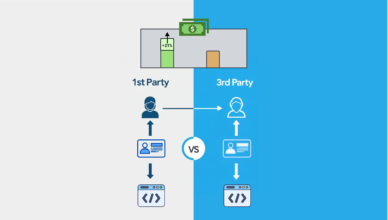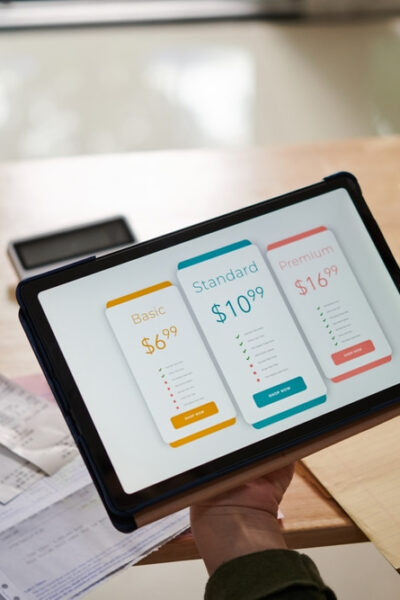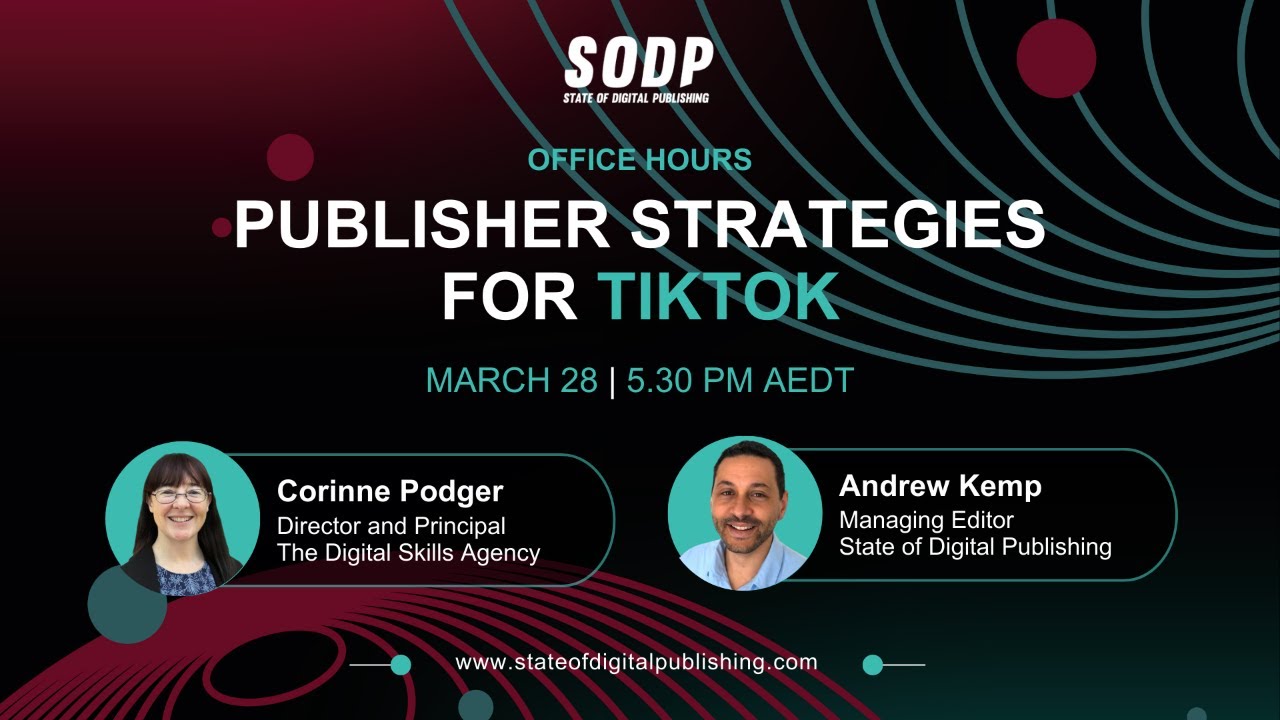Jason Downie is the Chief Strategy Officer at Lotame. In this interview, he discusses what lies ahead in publisher data management technology.
WHAT TYPES OF PRODUCTS AND SOLUTIONS ARE YOU OFFERING TO PUBLISHERS?
With the constant threat of Facebook and Google, and an increasingly fragmented fight for consumer attention online, publishers are more challenged than ever. As a result, they are looking for competitive advantages and ways to work smarter. Data is one of those advantages, helping publishers deliver smarter content to their readers and more effective ad campaigns for their clients.
This is where Lotame comes in. We help publishers with advertising, audience development, marketing their own products, content development, and data monetization.
On the advertising side, Lotame’s data solutions help publishers sell smarter by leveraging audience insights in a number of ways. We can help them create new sales opportunities, develop custom endemic and non-endemic audiences using their data, marketer data or 3rd party data, win RFPs, increase CPMs, and we can allow them to activate through any desktop, mobile or OTT ad platform.
Lotame’s tools also support publishers with audience development. We allow publishers to learn more about visitors, viewers, and app user attributes and behaviors, and use those valuable insights to tailor audience development strategies to increase engagement, balance paid/earned/owned activation channels and customize messaging to grow visits, views, and downloads.
For publishers, consumer marketing is also key. Lotame’s data solutions help publishers better understand their visitors, viewers and app users so they can develop and promote new products or subscriptions to the right audiences, and continue to diversify revenue streams. By segmenting their consumers and adding more insight with the addition of 2nd and 3rd party data, publishers can personalize the content and offers they deliver to each group, generating new opportunities to increase their subscriber base and drive additional revenue. This is critical today as more publishers look to move beyond an ad-driven monetization model.
For content development purposes, Lotame enables publishers to connect audience data from the Lotame platform with their CMS. This enables them to get a 360-degree view of consumers who read or view certain content types and then lets them take action to deliver more personalized editorial experiences. Delivering data-informed content increases the time consumers spend on their properties, drives more repeat visits and generates more advertising opportunities.
And finally, Lotame facilitates the monetization of first-party data for publishers and media companies. Through Lotame’s 2nd party data marketplace, they can license select slices of their data to interested buyers, and lean on Lotame’s data experts to guide them through the pricing and process. This is a brand-new revenue stream for most publishers and an area where we are seeing continued and impressive demand.
In short, Lotame’s unstacked data solutions make it easy for publishers and media companies to address their biggest challenges today.
WHAT ARE THE ADVANTAGES AND DISADVANTAGES OF USING DATA & TOOLS TO SHIFT THE BALANCE OF POWER BACK TO PUBLISHERS? ARE PUBLISHERS USING ENOUGH DMP’S? IF SO, WHY/WHY NOT?
Publishers are too often at the mercy of advertisers when it comes to driving revenue. By knowing more about their audience, they can use these insights to drive new and increased revenue opportunities. Not enough publishers are using DMPs and those that aren’t are using them to their full potential.
In fact, research we conducted last year found that 31% of marketers and publishers don’t collect data and a majority cited the cause as a lack of resources and education. One-third (33%) said that they didn’t have the internal resources in place to do so,’ while 31% said, ‘I don’t know where to even begin.’ Another 21% said ‘I don’t have the tools or technology needed.’ So, clearly, there is a lot of room for growth in this space.
We have found so much success with publishers specifically because we are consultative partners that can guide them on best practices to ensure their use of Lotame is optimized. We also offer unstacked solutions and tools so that they can pick-and-choose what they need on a custom basis. This lowers the barriers to entry considerably. Meanwhile, other DMPs might try to sell an entire stacked platform which requires an unmanageable amount of complexity for the publisher. We know that publishers want to work on a more bespoke basis and have built out our offering accordingly.
WHAT ARE SOME EXAMPLES OF PUBLISHERS USING LOTAME AND HOW?
We work with a number of publishers and publisher consortiums. Our solutions have powered multiple consortiums including The Ozone Project, developed by Guardian News and Media, News UK, The Telegraph, and Reach Plc; the Local Media Consortium, a collection of 90 local media companies in top markets across North America; the New Zealand Advertising exchange, KPEX and SMX in Singapore. These consortiums use Lotame Connect to collect data from the various stakeholders and Lotame LAB to build and segment audiences gathered from multiple publishers. They are then able to offer these powerful, large scale audiences to advertisers.
In APAC, we work with Indian publisher Viacom18 to offer custom advertising solutions to advertisers, increasing CTR by 2.3x and accuracy by 1.2x with audience targeting. They saw a 2.3x increase in CTR, and a 1.2x increase in accuracy for their targeted ads. We’ve also worked with Mediacorp to increase CTRs (570%) for the top management university in Singapore with cross-device targeting, to drive more ticket sales (300%) for management events. They saw a 300% increased conversion rate, and a 570% increase in CTR using our DMP.
A number of our publishers are using us to leverage data and insights to start or grow subscription programs. Some are using us for data monetization, selling their 1st party data in our 2nd party data marketplace at a premium. Others, like Hearst, are using Lotame to ingest advertiser data, match it against their own, then utilize Lotame Analytics to understand overlap between audiences in order to fuel higher performing ad campaigns.
CAN YOU OUTLINE ADVANCEMENTS IN DATA MANAGEMENT TECHNOLOGY AND HOW CAN A PROFESSIONAL BRING THIS IN-HOUSE?
The future of DMP technology is unstacking solutions. Among publishers, the need for data-driven solutions has exploded. Data powers advertising in programmatic and direct channels, across all formats and inventory types. Data can also fuel audience development, content development and consumer marketing, enabling publishers to scale users and revenue. The potential applications for audience data are exploding and diversifying far beyond advertising and are now supporting more omni-channel marketing efforts. As a result, the demand for one-size-fits-all martech stacks is shifting in favor of specialized data solutions.
Five years ago, a publisher would take stock of their data needs, then tap an unwieldy one-size-fits-all provider for support. Today’s data use cases are more varied, complicated and sophisticated than ever. The “stacked” DMP is usually a feature of a much larger solution that is underprioritized, underinvested, underdeveloped, and neglected. This has made the stacked DMP obsolete. Publishers demand more flexibility and tailoring. Data technology partners have to provide a diverse portfolio of solutions and capabilities that cater to specific needs.
This shift is also in response to in-housing. More publishers are becoming technologists and building out their own adtech or content tech platforms internally. By working with an unstacked product suite, publishers can create their own solutions with an a la carte approach, taking what they need from us as necessary. We have been very mindful of this evolution and our product mix is reflective of that.
HOW DO YOU THINK GOOGLE’S RECENT ANNOUNCEMENT WILL CHANGE HOW CHROME HANDLES COOKIES WILL AFFECT SELLING AND BUYING OF THIRD-PARTY DATA?
Content from our partners
Google’s recent announcement has created some confusion about the impact on advertisers and adtech platforms, particularly around the creation, selling, and buying of third-party data. Unfortunately, much of the confusion stems from a lack of clarity on the key terms.
Although third-party data and third-party cookies sound similar, they are very different things. I often find that marketers and media confuse the two. So let’s be very clear: a third-party cookie is a cookie placed on a device by a website from a domain other than the one a user is visiting in order to store personalization preferences and tracking information. Alternatively, third-party data typically refers to data that did not originate with the buyer or seller. Its origin is with a third party. Third-party data include various types of information, whether it be demographic, interest, or intent data, and, depending on the source, there are many ways third-party data is acquired and used by marketers. It might have originated in an offline consumer data file onboarded through a partner like LiveRamp. Or it could be related to the collection of common consumer actions on publisher websites like commenting on an article or sharing it on social media.
With that in mind, the flagging or blocking of third-party cookies doesn’t necessarily affect third-party data because the two are completely different elements in a company’s set of consumer data. Depending on what that third-party data is and where it’s coming from, more aggressive treatment of third-party cookies by the Chrome browser may or may not have a material effect on the scale of third-party data. For example, if Retailer.com wants to digitally market suits to people of a certain age, gender and household income, it can purchase 3rd party demographic data from a consumer data company that has brought such data into the online world from offline records via a data onboarder such as LiveRamp. That demographic data was not created by tracking consumer activity across the web via third-party cookies — but it is third-party data. Finally, third-party data can be associated with mobile advertising IDs (MAIDs) and OTT device IDs, and in those cases, the data would not at all be affected by changes to treatment of third-party cookies.
WHAT IS THE FUTURE OF DATA MANAGEMENT TECHNOLOGY FOR PUBLISHERS?
Data licensing for publishers is a huge trend. As the digital media landscape becomes more challenging, publishers are looking for new ways to monetize and need the ability to collect, organize, share, activate, and enrich their valuable first-party data. Marketers, on the other hand, are looking for more accurate, high quality data, especially in light of privacy regulations such as GDPR and CCPA. There is a growing need across the ecosystem for access to quality, niche data sets. The future of DMP technology will be to facilitate that — to create pipes for publishers so that they can sell and monetize their data.
As mentioned, there is also an evolution towards use cases beyond advertising. In today’s omni-channel marketing world, publishers and advertisers have access to many different types of data (web, mobile, OTT, IOT, etc) and are able to activate upon said data on an incredible amount of channels. Publishers, marketers and data vendors are only going to continue to become more sophisticated in light of these opportunities.












